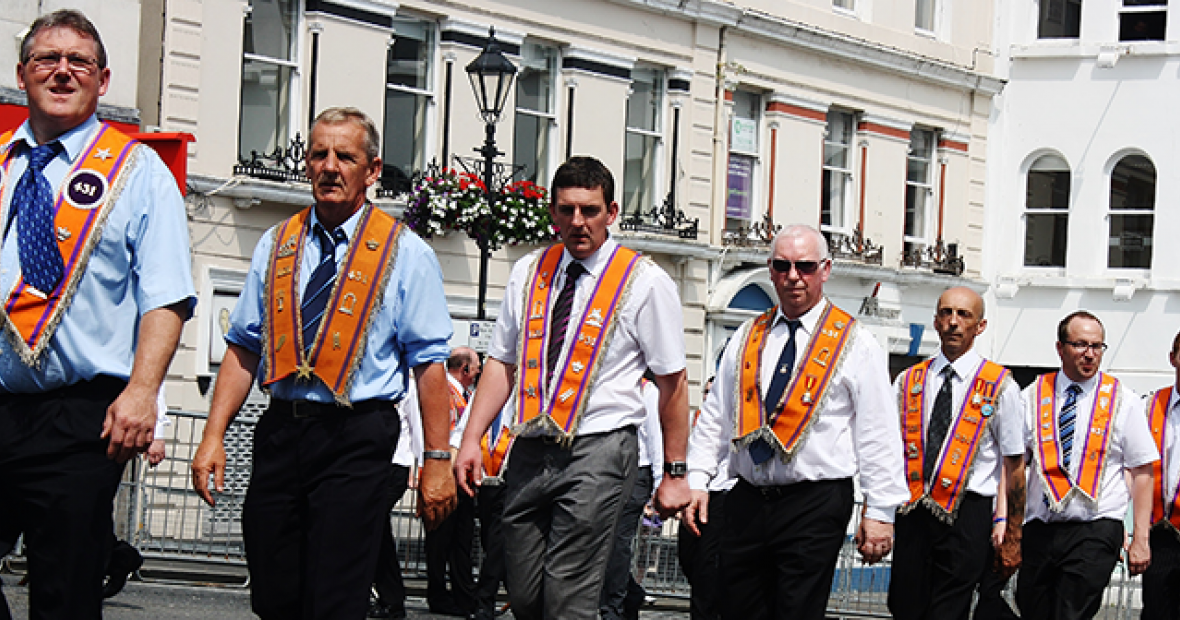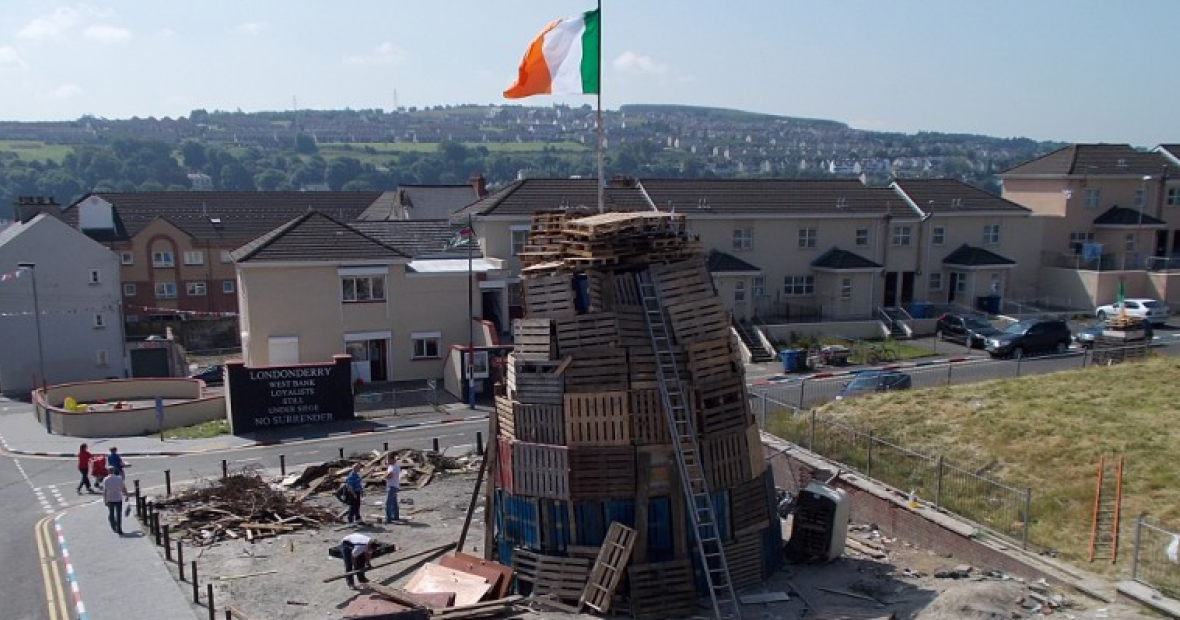More Violence for Northern Ireland?
Doug Caulkins, emeritus professor of anthropology, is leading a multiyear study of regeneration of Derry-Londonderry, Northern Ireland. Anya Vanecek ’15 and Mackenzie Shanahan ’14 are anthropology majors supported with summer funding from Grinnell’s Mentored Advance Project research funds.
Several nights of conflict between the police and Protestant loyalist demonstrators erupted in North Belfast when Protestant Orange Order marchers were prevented from entering a Catholic area. Four hundred police from other parts of the United Kingdom were drafted in to help Belfast police contain the violence in which more than 30 police and an unknown number of demonstrators were injured.
President Obama visited Belfast, Northern Ireland, on his way to the G8 summit and congratulated residents on the success of the peace process that has created relative calm between the Catholic and the Protestant communities who battled each other during “The Troubles” in the last part of the 20th century. With the reemergence of tensions between communities, a violent demonstration erupted in Belfast on the evening of July 12, during the annual Protestant marches of the Orange Order, celebrating the triumph of William of Orange in 1690 over the deposed Catholic King James in the Battle of the Boyne. Conflict broke out Friday between the police and loyalist Protestant demonstrators when the police prevented the marchers from entering the Catholic area of Ardoyne in Belfast, a traditional route that was put off-limits by officials this year. Demonstrators, mainly teenage boys, hurled fire bombs, bricks, stones, bottles, and flashed laser pens while police replied with plastic bullets and water cannons. People on both sides were injured, including a Protestant Minister of Parliament who was attempting to calm the protestors.
In contrast to Belfast’s violence, the Orange Order marches of the 12th in Derry-Londonderry, Northern Ireland’s second largest city, were peaceful. The Catholic residents prefer the name “Derry” which resonates with the old Irish name of the settlement on the site. Protestants prefer “Londonderry” which draws attention to the founding of the 17th century walled city by the merchant guilds of London upon the urging of the King of England. The official name of the town combines the two names to show that the best peace-ful compromise is to have it both ways. Derry-Londonderry is celebrating its selection as the UK City of Culture 2013 and the Orange parades were particularly impressive, with 5,000 marchers in over 60 Orange Order lodges and 40 bands parading from the Protestant neighborhoods across the bridge over the river Foyle into the walled city, which is predominantly Catholic. It took over two hours for the marchers to pass the war memorial in the center of town.
At midnight of the previous day, huge bonfires of tires and wooden pallets were lit to begin the celebration of the Orange Order marching season. This year, as usual, a tricolor flag of Ireland was flown from the top of the 35 foot high pyre. Some Protestants annually incinerate the Irish tricolor to emphasize their loyalty to British rule and their rejection of the possibility that the six counties of Northern Ireland will ever become part of the Irish Republic.
The Londonderry police were out in force, with armored Land Rovers parked strategically in the streets, while a police helicopter flew overhead, keeping a lookout for gatherings of potential troublemakers. The senior police officers constantly circled through the city in unmarked cars to make sure that all remained peaceful. Those of us who were lining the streets to watch the parade were cautioned sternly by the police not to say or do anything provocative. Police were careful to disperse any groups of teenagers that might have created a problem. Dozens of police stood watching the onlookers as the parade started, with a horse-drawn carriage with a costumed “King Billy” (William of Orange) and his wife waving to the audience. Then came thousands of marchers and the bands, which come in three varieties: bagpipe, accordion, and flute. All bands have massed drums that stir the appreciative crowds and sometime intimidate the people of the Catholic neighbor-hoods, according to their critics.
This year the two communities in Derry-Londonderry were peaceful for the beginning of the summer parades. Police were overheard talking to tourists about the importance of the UK City of Culture award that brought many events and visitors to the city. Along with a series of infrastructure and entrepreneurial developments funded by the government, the year-long City of Culture event is intended to bring regeneration to the city’s economy. Both the Police Chief and the Mayor remarked that the City of Culture is setting a good example for Northern Ireland as a peaceful host for the Orange Order marches. Significantly, the new Orange Order banner leading the parade into the city features the city’s new Peace Bridge, which connects the two communities which live on opposite sides of the river Foyle.
While most of the residents seem enthusiastic about Derry-Londonderry’s selection as UK City of Culture for this year, with the attendant funding by the UK central government, a clandestine paramilitary group, RAAD, or Republican Action Against Drugs, pledged to resist the program. RAAD had gained notoriety by first threatening drug dealers and then kneecapping or killing them if they persisted in dealing drugs. Thus far RAAD has done little to disrupt the City of Culture Celebrations, apart from some small bombs set off near City of Culture offices.
During the five weeks of our field study of the impact of the City of Culture regeneration of Derry-Londonderry we encountered a great deal of positive energy in the dozens of events and programs in which we participated. Caulkins will return again next year to assess the long-term legacy of the program, along with another team of students.
By Doug Caulkins, Anya Vanecek ’15 and Mackenzie Shanahan ’14


